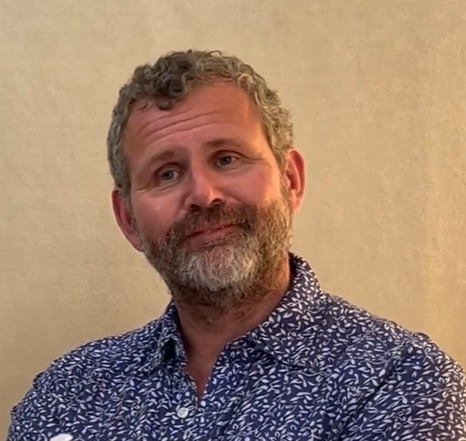New JCQ guidelines have been published
On 28 August, the JCQ (Joint Council for Qualifications) published their 2024-25 regulations and guidance for exam access arrangements.
Real Training’s free online Access Arrangements Update course launched last week and covers everything SENCOs, exam access arrangement assessors and coordinators need to know about the new regulations. This includes walking you through the new forms so that you can approach the 2024-25 exam season with confidence.
Sign up now and benefit from:
- Access to video content from Nick Lait, Head of Examination Services at the JCQ, who takes you through the inspection findings, changes, and answers your questions
- Video reviews of popular tests including the new DASH-2
- Explanation of the role of Access Arrangement Coordinator and an Access Arrangement Coordinator’s guide to working effectively with SENCOs
- Videos demonstrating the completion of:
- Form 8
- Form 8 Roll Forward
- Form 9 for a candidate on a waiting list
- Multiple-choice questions to test your knowledge and understanding
What delegates are saying about this year’s course
“I think the team have excelled themselves again. Fantastic course as always” – Tara McKibben
“As ever, a well-designed and delivered presentation. The notes on the administration of DASH-2 were a useful reminder. Thank you.” – Candy Clarkson
“Excellent course much more practical than previous years. Good case studies and practice forms will be helpful to use as good practice examples. Q&A helped to clarify and re visit the changes. Tests and multiple choice questions are a great refresher.” – Mary Agnew
“Thank you for a very useful and informative course. I am overjoyed you offer this every year free of cost. It is hugely appreciated.” – Annabella MacLaren
Have you thought about hiring an access arrangements coordinator?
Would you like some help with the administrative elements of access arrangements? When asked about the benefits of having an access arrangements coordinator, Nick Lait from the JCQ had the following to say:
“Trying to juggle senior leader responsibilities as well as exam access arrangements as a SENCO is very difficult. Having an Access Arrangements Coordinator in place can pay real dividends.
Training is desirable as it equips that person to make decisions independently or defer to the SENCO where required and, of course, ensures they have a thorough understanding of the latest JCQ regulations.”
Nick Lait – Head of Examination Services – JCQ
New course for Access Arrangements Coordinators launching 20 September
Our new course – coming soon on 20 September 2024 – is designed specifically for Access Arrangements Coordinators. It includes training on the latest 2024/25 JCQ guidelines, and will teach Coordinators the knowledge and skills they need to become a member of the team that ensures students receive the reasonable adjustments they need for success in exams.
For more information about the role of Coordinator, and details about the course, visit our dedicated Access Arrangement Coordination course page.
We have been shortlisted for a Teach Secondary Award!

We are delighted to announce that our Safeguarding AI course has been shortlisted for the School Business and Procurement category in the 2024 Teach Secondary Awards!
We’re thrilled that our new course, developed in partnership with Educate Ventures Research, have been recognised, alongside our commitment to equip schools with the knowledge and tools required to implement AI safely and responsibly.
The results will be announced in November.
About our Safeguarding AI course
Our Safeguarding AI for Leaders (SAIL) course is designed for Designated Safeguarding Leads (DSL) or other leaders in your setting with responsibility for safeguarding, pastoral care and/or technology implementation and use. This comprehensive course equips participants to develop and implement robust AI safeguarding policies, procedures, and action plans. Through a blend of expert guidance, practical tools, and peer networking, participants will gain the confidence and knowledge to lead on safe and ethical AI use in your setting. With a duration of 4-5 hours and 12 months of ongoing support, SAIL offers exceptional value and flexibility.
Announcing our partnership with Teach First
We are pleased to announce that, working in partnership with Teach First, we will be delivering the new NPQ SENCO.
NPQs are the most widely recognised qualifications in the education sector for current and aspiring leaders. This new NPQ for SENCOs will be the mandatory qualification for anyone who wishes to qualify and work as a SENCO in state schools, from 1 September 2024.
Having trained over thousands of SENCOs, being able to offer the new NPQ is an exciting next step in our mission to provide education professionals with high quality training that allows them to support the needs of students in their school or setting.
We have chosen to partner with Teach First as our values of making education accessible for all and developing high quality teachers align. Teach First have an established track record in leadership development, and have been an accredited NPQ provider for several years with excellent feedback from participants.
We are involved in the curriculum design process and our team of course facilitators support the programme delivery.
Our NPQ SENCO course offers a blended learning approach, comprising flexible online learning, engaging seminars and thought-provoking in-person conferences, all led by experienced facilitators who have worked within the sector and our team of Educational Psychologists. You can look forward to learning at your own pace and from anywhere, while collaborating and sharing best practice with a network of SENCOs and SEND experts.
We are now accepting applications. The deadline for the first cohort is 17 September 2024, with the course starting in October 2024. We advise applicants to apply as soon as possible in order to guarantee a space.
To find out more about our new NPQ SENCO, visit the course page here.
Emotional intelligence is more than naming feelings, it is a person’s overall ability to deal with their emotions….
There are five main aspects of emotional intelligence which, when developed, lead to children becoming emotionally literate. These are:
- Knowing emotions – A child recognises a feeling as it happens.
- Managing emotions – A child has ways of reassuring themselves when they feel anxious or upset.
- Self-Motivation – A child is in charge of their emotions, rather than controlled by them.
- Empathy – A child is aware of what another person is feeling.
- Handling relationships – A child is able to build relationships with others.
Encouraging young people to understand the difference between “sad”, “disappointed” and “upset” acts as springboard to develop appropriate strategies. Every emotion word learnt is a new tool for future emotional intelligence.
This resource helps children to identify and articulate their emotions and start to discuss and understand how they are feeling.
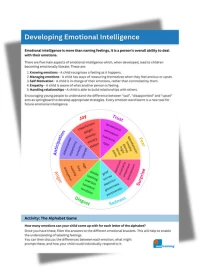
For more information about our courses on emotional regulation take a look at our Social and Emotional Mental Health course or our short CPD from our sister company, Dyslexia Action, on the Emotionally Connected Classroom.
This year we had a record-breaking number of delegates graduate with a postgraduate award. We were excited to have the opportunity to celebrate with some of them at their Middlesex Graduation ceremony!
Delegates achieving a Postgraduate Certificate, Postgraduate Diploma, or Master of Education were invited to don their cap and gown at the recent Middlesex University graduation ceremony and we were delighted that so many were able to attend in-person.

The graduation event is more than just a ceremony for our graduates, it’s a chance to celebrate their hard work and connect with their peers. Just before the ceremony, we raised a glass to our graduates’ success at a drinks reception, which was a fantastic opportunity for graduates, their families, and our team to mingle, share stories, and celebrate all that has been achieved.
We also took the opportunity to set up a filming booth to capture our delegates’ experience of studying with Real Training and find out about the positive impact their training has enabled them to have in their setting. It has been such an honour to be part of each of our delegate’s learning journeys, and we can’t wait to see where their new qualifications take them.
So, a massive congratulations to all of this year’s graduates and to those delegates currently studying with us, we hope to be able to celebrate with you in the future!
Feeling inspired? Why not take a look at our courses to see how you could further your career.
This resource is designed to help develop pupils’ spatial thinking and non-verbal reasoning skills through a series of tasks that require them to closely examine patterns. It has been designed in PowerPoint to make it easy for you to edit and add your own notes for learners. Many of the shapes are editable to allow teachers to create further patterns.
Explanatory notes and answers can be found in the accompanying download.
Don’t miss Gill Cochrane’s article: Making maths stick: The Importance of Spatial Thinking. Gill explores the latest thinking on spatial thinking and relational reasoning and how teachers can help build these skills in order to protect against later maths difficulties.
Encouraging more spatial thinking in maths can have a big impact on children’s confidence and overall ability. Gill Cochrane explains the close link between spatial thinking and reasoning skills and outlines some practical things teachers can do to help. [Don’t miss our free resource at the end].
Whilst teaching maths as a primary school teacher, I became fascinated with the idea of ‘semantic glue’ – or what makes information ‘stick’ in our memory. The pursuit of answers to ‘the glue question’ led me to undertake a psychology degree. During my studies, I came across these words from the Nobel prize-winning scientist Eric Kandel:
“Memory is everything.
Without it we are nothing.“
– Eric Kandel
Kandel studied Californian sea slugs to reveal how memories are formed. This research helped demonstrate how memory supports the process of monitoring for safety when we are moving through space. Human functioning and reasoning essentially evolved to serve this need. Grasping this powerful idea allows us to appreciate how inextricably linked spatial processing and reasoning are.
There are three essential steps in both processes:
- adding new information to what you already know and hold in memory
- relating and connecting this information to what’s already known
- using this new information to achieve a purpose or find solutions to challenging situations.
Essentially, both boil down to extracting meaningful patterns from the environment. Understanding this helps to explain why the latest research into how children learn maths has demonstrated a causal relationship between spatial thinking and academic outcomes, prompting increasing calls to spatialise the maths curriculum. It could also explain why weak verbal and spatial working memory are commonly associated with maths difficulties and maths anxiety.
So how can we, as teachers, exploit the connection between reasoning and spatial skills to help re-address difficulties with maths learning?
Pattern detection and relational reasoning skills
Relational reasoning makes a unique and positive contribution to maths outcomes. Giving pupils early and explicit experience in rule-following will improve their ability to monitor sets of information for patterns.
Attribute blocks vary in shape, thickness, colour and size; early sorting work with these blocks encourages learners to observe and describe relative differences and similarities and boosts maths vocabulary. Venn diagrams give a great framework for further explicit categorisation work using the blocks. Children can then build on the knowledge gained sorting shapes to generate patterns. This is an important skill, as it involves the application and creation of rules.
Activity 1 – Sort it out: Present children with an assortment of attribute blocks and a simple rule card that says, for example, ‘circle’. Ask them to sort shapes according to the rule. Gradually make this more complex by adding more than one rule for example, ‘circle’ and ‘thick’. You can see this in Figure 1.
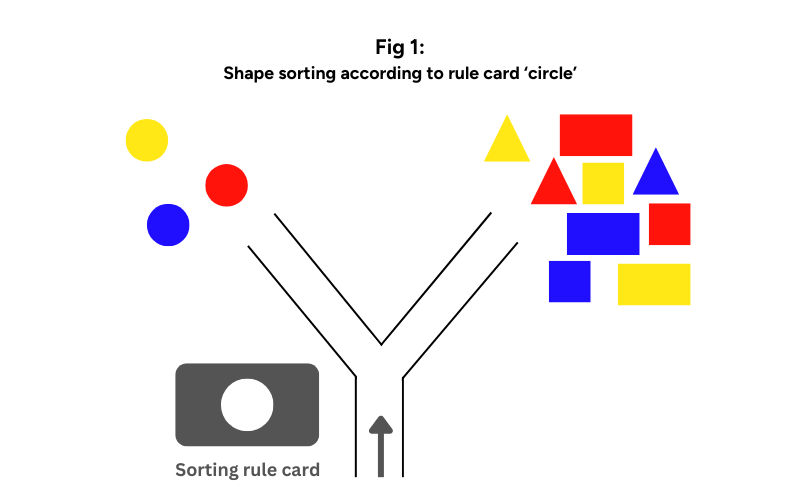
Activity 2 – One at a time: Give pupils a set of attribute blocks each and ask them to play a domino game where the rule ‘only one change at a time’ governs the flow of play. They will need to take turns to put down blocks between them, but they won’t always be able to go. An example sequence from a game is shown in Figure 2 below.

For progression, you could also ask pupils to work together or independently to determine the steps they must go through in order to get from an initial state to an end state in the shortest number of moves by changing only one attribute at a time. For example, ‘How many steps does it take to get from a large, red, thick circle, to a small, blue, thin triangle?’
Activity 3 – Patterns: You can encourage children to discuss their reasoning by providing prompts to structure their analysis of a pattern. In Figure 3 you can see how pupils are asked to fill in information about every stage of a pattern. For example, has the number of objects changed? Are they the same shape? The grey ‘difference diamonds’ featured in the speech bubbles prompt the recording of this crucial bit of between-item information. Providing the numerical term positions on the roofs helps to structure discussion of the pattern and predictions of the next item in the series. Developing pattern detection skills like this will help children move on to more complex non-verbal reasoning.
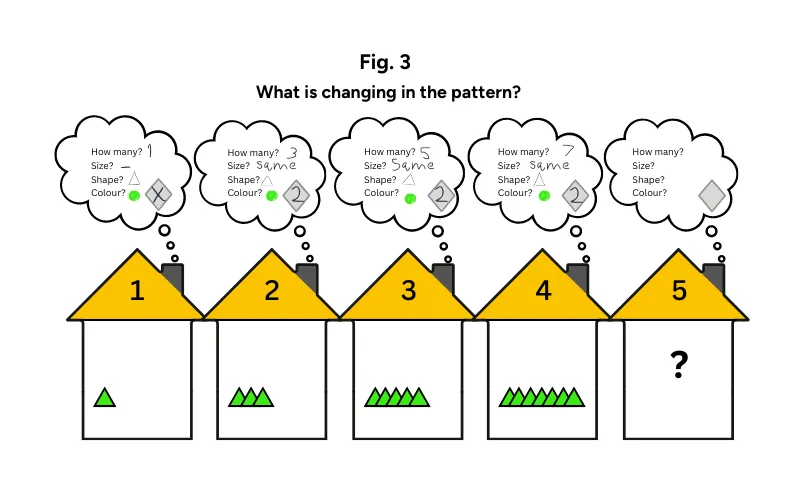
Analogical reasoning
This is perhaps the most familiar type of reasoning, and it features in many popular matrix tasks, such as Figure 4. In activities like this, the learner needs to choose the right shape to complete a pattern. Information can be deduced by looking at the relationships between the two other given sequences; potential answers are displayed immediately below each question.
It’s important for us, as teachers, to understand the steps in the exploration that lead to the solution.

Reasoning by anomaly
This involves working out the rule behind various patterns and then spotting the sequence that isn’t following it. Look at Figure 5. By studying each of the patterns and the interrelations within them you will start to appreciate how practice in this type of task promotes structured scrutiny of the relationships within and across the set items.

Reasoning by antithesis
This requires learners to identify when a parallel or opposite rule has been applied. This is more complex, as the process must be identified so the sub- item featuring the opposite process can be chosen. Practice with all these types of non-verbal reasoning tasks is done without processing number systems, allowing analytical skills to be strengthened separately from numeric work.
There is evidence that this type of reasoning practice can help when it comes to work with numbers.

Purposeful scanning
A rich body of research demonstrates that purposeful scanning of information can significantly aid the ability to solve problems. There are indications that providing practice in explicitly noticing relationships within written equations can boost performance on similar maths problems. For example, building meaningful gesturing into the appraisal of sums can lead to better performance on tasks involving the equivalence concept.
Ask pupils to use their index and middle fingers to touch each number before the equals sign (and any after it) and then to use their index finger to point to the missing information. (See Figure 7). The gesturing enhances the processing of the equation as a whole, working from left to right.

Changing how we present sums can alter the way pupils monitor the equations set and boost performance. Re-organising the presentation of a problem (see Figure 8), promotes scanning of the whole sum, and examination of the interrelationships within it.
In time, with supporting, structured discussion, learners can develop flexibility in strategy use when calculating, which can reduce the need to calculate in some cases. The children will learn to exploit the inter-relations to reduce the cognitive load of computation.

Read also: Understanding maths difficulties
Organising numbers and fractions spatially
Recent research has shown that lower levels of maths anxiety are found in people who ‘spatialise’, organising sequences from left to right in verbal working memory.
Here are some ways we can help children spatialise their mathematical understanding:
- Number lines and bar models should be modelled as important organisers of computational thought.
- Work on fractions should include their ordering on number lines to make relative value explicit.
- Cross-sectional drawing can provide an additional way to map space to solve word problems.
There is a causal link between spatial thinking and achievement and confidence in maths. Spatialising maths builds an appreciation of the relations between and within objects and ultimately contributes to a more secure mathematical understanding in the longer term.
Gill Cochrane is a former primary school teacher. She is now the lead developer on the specialist literacy and maths courses run by Real Training in partnership with Dyslexia Action.
Find out more by visiting realtraining.co.uk/maths-courses
Free resource!
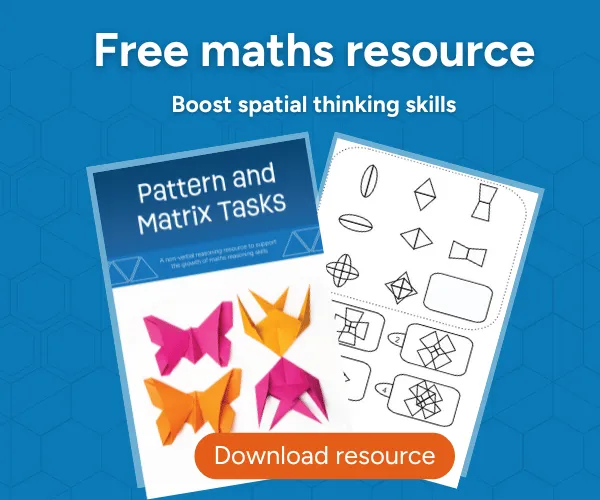
| Gill’s Top Tips for Building Maths Confidence |
| Reduce reliance on memorisation for learning basic number facts; use number relationships and reasoning strategies instead. Try conceptual instruction using a limited range of numbers (e.g., 1 to 9), their sums and associated subtraction facts. This makes it easier to analyse the relationships between the elements within the sums. Use exploratory work on factor pairs to help encourage more flexible calculation strategies. Giant number lines can help young learners to walk through sums and to conceptualise counting as ‘moving on.’ Gesture and personification have been shown to increase retention and deepen understanding by recruiting a wider range of memory systems. Use concrete resources for teaching angles for example, using hinged strips to show that an angle is a measurement of turn. Promoting maths oracy should be an important feature of each maths lesson. |
We are excited to announce we have launched a brand new course, aimed at ensuring the safe and ethical integration of Artificial Intelligence (AI) in education.
Our Safeguarding AI for Leaders (SAIL) course is tailored for Designated Safeguarding Leads (DSLs) and school leaders, focusing on developing and implementing robust AI policies within educational settings. Developed in partnership with AI experts Educate Ventures Research (EVR), it is designed to equip educators and school staff with the knowledge and tools needed to navigate the evolving landscape of AI while prioritising student safety.
The new course addresses key areas such as:
- Adapting safeguarding practices for AI
- Exploring new threats and ethical considerations
- Ensuring security and compliance with regulations, practical implementation strategies.
It has been a please to develop this course alongside Educate Ventures Research (EVR), leaders in the field and who have brought their expert knowledge, evidence-based strategies, and practical guidance to the programme, enabling delegates to learn how to responsibly integrate AI into educational practices.
For more information, including eligibility, start dates, costs, and duration, please visit the Safeguarding AI course page here.
By Dr Sue Sheppard, Educational Psychologist and Module Leader for Real Training’s postgraduate courses in autism. This article originally appeared in Teaching Times.
If you could model a learning environment that was intended to be an assault on the senses it might very much look like a typical school.
To a neurotypical person this might be difficult to comprehend – yet for a young autistic person, our schools can be the epitome of chaos. Hundreds of children shouting noisily, teachers raising their voices to be heard, bells going off, the constant echo of footsteps in corridors, people talking all at once in lessons, dense slides, bright lights, itchy uniforms, a bombardment of smells in the dining room.
It can take a lot of energy just to be there.
For autistic girls, however, this exhaustion is often multiplied due to their need for perfectionism and the pressures of masking as they strive to meet social expectations. The more we learn about their routines, including ruminating, the clearer it becomes that this can be at the detriment to positive wellbeing. Autistic girls have even been described as ‘little psychologists’ by some in the field, due to their tendency to over-analyse events and experiences.
Gender stereotypes have shifted over the last ten years or so and we now recognise the nuances of autism in girls. I’ve spent thirty years as an educational psychologist, developing a specialism in autism and in recent years have increasingly worked with young autistic girls. Many of these girls report feeling isolated, misunderstood, anxious and exhausted. There is a significant increase in those who find attendance challenging and many have been out of school for extended periods of time. These students may gain other labels, for example, anxiety or depression which become the focus and their wider needs can then be ignored. It has been suggested that up to 80% of autistic girls remain undiagnosed at the age of 18.
Much of what I have learned comes from listening carefully to autistic girls and women and their families. Here’s what I would advise teachers and leaders to focus on;
Provide meaningful ways to connect
Research is showing that a ‘sense of belonging is key’ for autistic girls who need to find a feeling of community just as much as their peers. Many autistic girls can struggle with this at school, however, some girls might be very sociable and talkative and others will be more shy and isolated. It is important to ensure autistic girls spend regular time with named key staff who can really get to know them and ‘empower’ them to share their views around what works well for them and what makes challenges worse.
In a recent video produced by the Donaldson Trust, Erin Davidson, a 17-year-old with autism explains that “the feeling of isolation at school was, well, crushing because I could be surrounded by people and still be entirely alone.”
Schools can help by setting up supportive lunchtime or drop-in groups for neurodiverse girls so they find peers they can relate to and perhaps even gain support from. Providing peer mentorship schemes or buddy schemes with empathetic neurotypical peers or trained wellbeing ambassadors can also be considered, with guidance from teachers or support staff.
Breaktimes can be problematic because they are unstructured. Providing activities where autistic girls can bond with a small group in shared activities such as art/craft, origami workshops, digital animation or film clubs, reduces the need for scripted small talk and allows them to talk about an interest with others who are equally passionate. It might bring added benefit of providing some much-needed sensory stimulation or opportunities for relaxation.
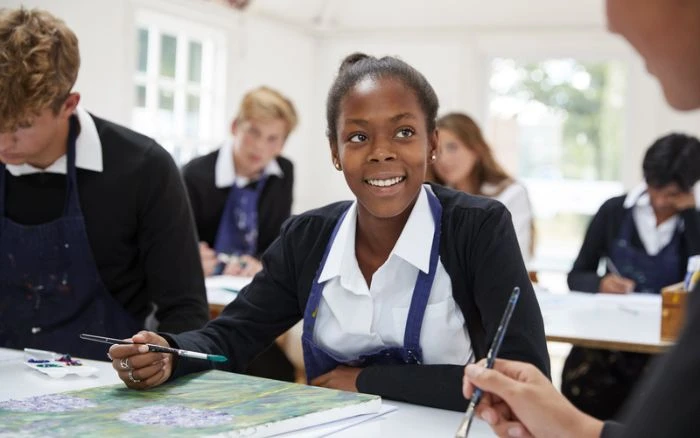
Recognising anxiety triggers and managing transitions
Emerging research suggests autistic girls may be more prone to anxiety than autistic boys. Before adaptations can be made, we need to identify the triggers for each individual. Often, for girls, this can be related to unexpected changes, a lack of control over transitions and a need for perfectionism.
Classroom-based solutions might include; pre-warning of changes, sticking to ‘set’ seating patterns and allowing autistic individuals to leave the classroom five minutes earlier than their peers when it is quieter. At the same time, it is very important to ensure they do not find themselves ‘standing out’ even more. They may need more individual instructions to get started and visual supports and prompts, plus reassurance that they are on track.
Outside of the classroom, anxiety drop-in workshops can help equip girls with calming strategies, breathing techniques and ways to understand and avoid catastrophizing and negative thought patterns. One technique I often find works well in individual work is the ‘size of the problem’ method of viewing their concerns. Introducing the idea of a ‘stress bucket’ has also been effective as has teaching about ‘automatic negative thought patterns’ and using ‘laddering and rating scales’.
Visual demonstrations of ideas are important and analogies often seem to help. Additional support from staff who have specialist skills and autism training will help each girl build up a personal ‘toolkit’ of strategies to understand and manage anxiety. It takes time, but is very important, as is the encouragement to trial ideas.
Reducing sensory overload in the classroom
Reducing sensory overload in the classroom; it is important to recognise that individual needs will be quite different here, so teachers should work closely with the young person to identify what helps, whether that’s allowing her to wear noise-cancelling headphones or providing a preferred seat at the front of the class or pulling down blinds etc. Some schools also provide the opportunity to use screens at workstations or a quiet zone. Individuals will differ and may experience hyper and hypo sensitivity to sensory input. I usually carry out sensory audits as part of my assessments. Take note, as well, that the dining hall can be hugely problematic and separate spaces for eating lunch may be needed.
Some girls will find the concept of pair work uncomfortable, others end up leaning on just one solitary friend. Teachers could steadily build up a small rotation of ‘trusted and preferred’ peers to increase the quality of social interaction and also help broaden the ideas that are discussed. Giving set roles in advance which draw on their strengths is useful, for example, appointing a girl who has skills in drawing as the illustrator.
If the pace of lessons is a challenge, providing opportunities for remote or virtual work, such as collaboration via Google documents and allowing ‘time to process’ thoughts can also be beneficial.
Teaching self-compassion
Girls who gain a diagnosis can feel more understood, but this journey can take time. Building positive affirmations into the routine of school life and teaching self-compassion can help guard against this. Perfectionism and over-analysing are common traits in autistic girls, so teachers should work with students to set realistic goals and teach that failure can be a benefit to learning.
Recognising and developing strengths; providing an outlet to work on and highlight strengths is essential. Take the lead from the individual and identify areas she enjoys e.g; drama, art, music, literature, baking, any sports, forest school skills, design and construction etc. Personally, I have seen girls who’ve been put in charge of social enterprise initiatives linked to their interests, such as catering for school events, really thriving in secondary school.
We should celebrate areas where they do excel e.g. specific subjects, strong memories for facts, and good vocabularies. Often autistic girls have rich imagination and creativity and are strong with logical systems.
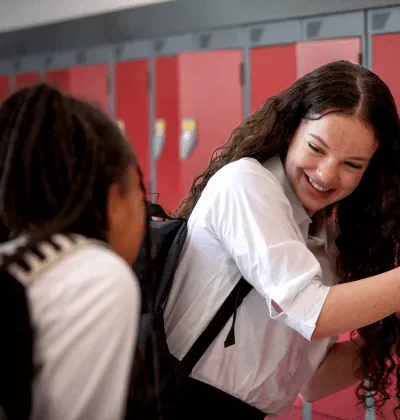
Regular rest and restore opportunities
For the majority of autistic girls masking and/or sensory overload is exhausting and they need opportunities to ‘recharge’. This could be a time-out system from class, quiet zones for break times and access to a ‘safe-haven’. They need ways to access safe spaces in school where there are named adults they can turn to. Reduced timetables at GCSE level can also facilitate positive learning outcomes.
While, in my experience, later arrival times can sometimes add unnecessary pressure about being treated ‘differently’ and ‘standing out’, slightly earlier departure times and/or relaxing or solitary activities before it is time to leave school can, and should, be offered. This provides the young person with an opportunity to decompress, get away from the sensory overload of school and travel home at a quieter time of day.

Working very closely with parents
Autistic girls need opportunities to unmask. They may hold it together during the school day but then release frustration or anxieties when they get home. Having open lines of communication with parents is essential, often school professionals will think that a young pupil is coping fine, but parents will have a very different view. In her highly informative video about spotting the signs of autism, Immie Swain describes how she would “keep it together at school but then when I got home everything would go wrong.” Schools need to know this whole picture and listen to parents. Alleviating pressures at school can make life at home easier. Sleep issues are also common and will further impact learning if not identified and supported.
Specific PSHE advice
I don’t like referring to autistic people as vulnerable learners, because it’s often our artificially created “neurotypical” environment that renders them that way. Autistic girls may be very adept learners, however, they can struggle to be flexible in rapidly changing social situations. Their lack of natural ability to pick up on social cues can make them more likely to be vulnerable to exploitation and bullying and in some cases victims of sexual assault. Teaching them how to stay safe will be important.
Schools might consider getting special-trained staff to teach sex-ed to autistic girls who often don’t discover intimacy until much later or indeed prefer not to have physical intimacy. They may also need more support when it comes to things like self-care and diet. Eating disorders can be present and need specialist support but eating issues may also relate to sensory factors or routines relating to calorie counting and specific diets. Schools need to be mindful and seek advice when it’s required.
Alternative female role models; some autistic girls might initially try to copy the most popular girl in the school or influencer on social media, but usually end up finding their own style. Highlighting positive neurodiverse role models in lessons can help them broaden their idea of what it is to be successful. There is a greater likelihood that autistic girls will not conform to gender norms and they may have a more unique understanding of interpersonal relationships.
Access to animals and nature
Time spent with animals and in nature can help alleviate anxiety, as well as helping with social interaction. Autistic girls often love their pets and are drawn to animals and report finding them more predictable than people. Whereas boys with autism may be more fixated on mechanical things, girls tend to have special bonds relating to animals and build positive relationships in this way. Schools that have a ‘school dog’ or links with horse riding centres or local farms have utilised such programmes with success.
Using alternative sports as an outlet for confidence-building
Sport can be another way for autistic girls to tap into a community as well as generally releasing endorphins. If your pupil finds team sports challenging, then offering her engaging solo activities such as fitness suites, wall climbing, swimming, and trampolining might also serve a similar purpose. Athletics is often popular. Sometimes, the most compassionate thing to do is just to let her sit out some PE activities (especially team-based ones).

Final thoughts
Autism has been vastly under-diagnosed in women and many education professionals are only now just beginning to learn how to spot the signs in the current generation of young girls – some of whom go to incredible lengths to camouflage their ASD.
Although autistic girls may be sometimes be quiet and not seek the attention of the group, this does not always mean they are ok. As they go through school and ‘informal rules’ around female social lives become more complex, the effort required to blend in will become more intense. It can feel isolating and anxiety-provoking if you want to keep talking about horses or manga characters, but your peers have moved on to other things.
It is vital, therefore, that individual needs are clearly identified and the right one-to-one support is put in place. This means not just making adaptations for multi-sensory needs within the classroom, but considering wellbeing and self-confidence in a broader context that will promote a ‘sense of belonging’, as well as increasing confidence and happiness. Sarah Hendrix, an autism advocate, speaker and assessor, has created a great video exploring how to do this.
Some of this requires a shift in mindset. Rather than simply trying to coach girls about how to fit in and improve their social skills – we should also be enabling them to find those moments of meaningful connection where they can genuinely be themselves. We also need to listen with care to identify solutions to any presenting challenges and we will need to be creative and highly flexible.
In a recent survey, only 14% of secondary teachers said they received more than half a day’s training on autism. Given the nuances of how ASD presents, particularly in girls, it is difficult to see how this can be sufficient. We need a whole school approach to build an autism-friendly school with good levels of training for all staff and an ‘autism champion’ who takes the lead.
Auditing autism provision in your setting should be a priority, both to celebrate what you are doing well, but also to identify an action plan for enhancing provision for this group.
Dr Sue Sheppard is a practicing educational psychologist. She is also Real Group’s specialist EP for autism and module leader for Real Training’s postgraduate courses in autism. She has been a consultant to the Lorna Wing Centre for Autism (part of the National Autistic Society) since 1996 and is embedded in the internationally recognised DISCO diagnostic training team.
After starting her early career as a specialist teacher, Sue worked as an EP for numerous London boroughs. She has been instrumental in setting up provision for children with ASD across early years, primary and secondary. She continues to work in schools and with families and undertakes specialist psychological assessments of autistic children and young people.

